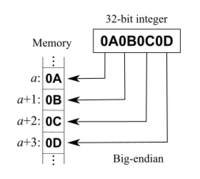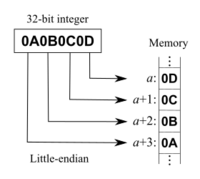Disassembly: Difference between revisions
m (remove AT&T style register names) |
|||
| Line 244: | Line 244: | ||
==== .rodata ==== | ==== .rodata ==== | ||
'''.rodata''' is where global constants are located. It is meant to be non-writable as well. | '''.rodata''' is where global constants are located. It is meant to be non-writable as well (as the name implies, '''R'''ead '''O'''nly '''data'''.) | ||
==== .data ==== | ==== .data ==== | ||
Revision as of 06:01, 2 July 2023
This page is currently a work in progress! Information on this article may be incomplete or inaccurate. |
Assembly is something we all have to learn eventually in order to properly modify Roblox without having its source code.
Usually, we use a tool such as IDA Pro or x96dbg. Because Roblox (before Byfron was introduced in 2023) uses VMProtect, simply modifying its executable isn't possible, and you must attach to it while its running.
This article assumes you have an intermediate knowledge in both C++ and computer science in general.
Instructions
The x86 instruction set is a vast instruction set with various extensions. Luckily, you'll only really see basic x86 instructions when debugging Roblox as all Roblox clients (before 2023) are x86.
These are some common instructions (but not every instruction) that can be seen whilst debugging Roblox.
| Instruction (NASM syntax) | Name | Purpose |
|---|---|---|
| jne [address] | Jump if Not Equal | The processor will set EIP to [address], if EFLAGS has the NE (Not equal) bit set. |
| jnz [address] | Jump if Not Zero | The processor will set EIP to [address], if EFLAGS has the NZ (Not zero) bit set. |
| call [address] | CALL | The processor will set EIP to [address], then push the current address. |
| cmp [a], [b] | CoMPare | The processor will compare [a] and [b], and set EFLAGS with the results of the comparison. |
| mov [a], [b] | MOVe | The processor will set [b] to [a]. |
| nop | NO oPeration | The processor will not do anything. |
Where's All the Data?
It may be noticed, that in the set provided above there are terms such as 'EFLAGS', and 'EIP'. These are CPU registers. CPU registers are the fastest way to retrieve, manipulate and store data but are limited in size.
| Register | Purpose |
|---|---|
| EAX | General purpose register, sometimes called the Accumulator register. In C and C++ this is used for storing the return value of the last function. |
| EBX | General purpose register, sometimes called the Base register |
| ECX | General purpose register, sometimes used to store the loop counter. In C++, *sometimes* this points to this, the current class.
|
| EDX | General purpose register |
| EBP | Stack Frame Pointer. This is how programs will typically safely address other values in the stack, because ESP will fluctuate wildly during execution. |
| ESP | Stack Pointer. This is where the x86 fetches the top of the stack from. This decrements (decreases) when PUSHed to, and increments (increases) when POPed from. |
| EDI | Destination index (typically used for arrays) |
| ESI | Source index (typically used for arrays) |
| EIP | Instruction Pointer. This is where the x86 fetches the next instruction from memory from, and is incremented by the size of the decoded instruction every instruction. |
| EFLAGS | FLAGS. This is where the cmp instruction stores its results. This is not directly accessible by code itself, but can be manipulated via flow control using the JNZ, JNE, JEQ and miscellaneous instructions.
|
All of the registers here are 32 bit registers, which when PUSHed take up 4 bytes in the stack.
Memory
Memory is the second fastest way to store data on x86. It is a large array of sorts, storing the program itself, all of the data the program reads and writes to, and everything else necessary for system functioning.
Values have different size depending on their storage type.
| Type | sizeof(Type) in bytes | Max Value |
|---|---|---|
| uint64_t (long) | 8 | ±9,223,372,036,854,775,807 (signed), 18,446,744,073,709,551,615 (unsigned) |
| uint32_t (int) | 4 | ±2,147,483,647 (signed), 4,294,967,295 (unsigned) |
| uint16_t (short) | 2 | ±32,767 (signed), 65,535 (unsigned) |
| uint8_t (char) | 1 | ±127 (signed), 255 (unsigned) |
Unsigned and Signed Integers
A signed integer is simply an integer with the last bit set to hold the "sign" bit. This bit determines if the integer is negative or positive. When it is 0, the integer is positive and when it is 1, the integer is negative.
Integer Endianess
In x86, integers are little endian. That means that the most significant byte (the first byte in the integer) at the largest address (the address farthest from 0), and stores the least significant byte (the last byte in the integer) at the smallest address (the address closest to 0).
Stacks
Stacks are a form of data storage employed by most CPU architectures, including x86. In x86, the stack can be imagined as a stack of plates. You can put a plate on top of the stack (PUSH to the stack), and take the top most one off (POP from the stack).
When you call for example, the processor will PUSH the value of EIP, then go to the new address. When that subroutine eventually executes a RETurn instruction, the processor will POP the last value on the stack (which in this case, is what EIP used to be!) and then set EIP to the old address.
The stack of plates analogy breaks when it is possible to access ANY value in the stack at ANY time without POPing it, because in x86's case it has full access to the memory of the stack. This is useful when you use a calling convention, which is explained further below.
Calling Conventions
The stack frames may not be correct. As of writing this, I was very sleepy and I am a bit rusted myself in Assembly. |
To complicate stacks further, most programs employ a calling convention. This is most used by programming languages such as C, in order to keep track of data between functions. When functions run, without storing its initial registers the new function will overwrite them, and the data held beforehand will be lost. This is a problem when in this case:
int x = 10; // imagine this is the register x
printf("Hello World"); // this function will likely need to use the register x in its lifetime
printf("%i\n", x) // x returns 5, function before overwrote x 'mangling' it
The solution to this is to use the aforementioned stack. When a function is called, it will PUSH certain registers and then CALL the address. In our basic calling convention where the callee (the thing that calls the function) stores EAX.
callee: mov eax, 20 push eax call function ; eax now equals 10 pop eax ; eax now equals 20 function: mov eax, 10 ret
There is a catch here, for function to manipulate data. When function reaches its first instruction, this is what memory looks like at ESP for itself:
| Offset | Name |
|---|---|
| esp | Return Address |
| esp+4 | EAX |
This is not a realistic calling convention however, as it does not store EBP (the stack frame base pointer).
__cdecl
__cdecl is one of the calling conventions used in modern x86. It is the default calling convention used in C, and stores arguments and local variables on the stack.
Through accessing memory using esp or ebp as offset bases the function can modify the stack, receiving arguments and allocating values on the stack.
void caller() {
function(5);
}
int function(int y) {
int x = 0;
x = x + y;
return x;
}
This will compile to
caller: push 5 ; push argument y to function call function
function: push ebp ; preserve current frame pointer mov esp, ebp ; set frame pointer to stack top sub esp, 4 ; allocate space for int x; mov eax, [ebp-4] mov eax, 0 ; int x = 0 add eax, [ebp+8] ; x = x + y add esp, 4 ; restore space from int x; pop ebp ; restore old frame pointer ret ; eax is the return register on __cdecl
In memory, the function will see this before executing add esp, 4:
| Offset | Name |
|---|---|
| esp, ebp-4 | int x; |
| esp+4, ebp+0 | EBP |
| esp+8, ebp+4 | Return Address |
| esp+12, ebp+8 | int y; |
The conventions above are using the __cdecl conventions however, and are not what you would find in some Roblox methods. Roblox and C++ classes uses a calling convention named __thiscall.
__thiscall
In __thiscall, variable arguments are not supported. However, ECX (a register you may recognize above) is used as this. All arguments are pushed onto the stack. A __thiscall function in assembly may look like this:
callee: push ecx ; save class push eax ; argument 0 push ebx ; argument 1 mov ecx, class_ptr ; class call class_func ; class' class_func add esp, 8 ; 'remove' argument 0 and 1 from stack pop ecx ; restore class
This would roughly be the same as
void caller(void)
{
class* class = 0;
class->class_func(0, 0);
}
The function class_func would most likely assemble to
class_class_func: push ebp ; preserve current frame pointer mov ebp, esp ; create new frame pointer by pointing to the current stack top ret
__stdcall
__stdcall is a Win32 specific calling convention in which the callee cleans the stack. It's not very important here, so we'll brush over this.
Modules
Modules are executable files loaded into memory. When Roblox starts, Win32 will load various DLLs and run them and then run Roblox. This is why if you start Roblox with x32dbg, it will start in some random DLL instead of RobloxApp.exe for example.
Performing operations such as searching for strings will not work in modules that are not the RobloxApp module (or whatever executable Roblox is running from) since it will search memory regions that may have nothing to do with Roblox itself.
When Win32 loads a module, the module within has information where certain regions of data within the module are mapped into memory. There are 4 sections which are important:
.text
.text is where the executable code is located. It is meant to be non-writable. You'll be doing most of the editing in this section.
.rodata
.rodata is where global constants are located. It is meant to be non-writable as well (as the name implies, Read Only data.)
.data
.data is where initialized read-write data is located.
.bss
.bss is where uninitialized read-write data is located.
Wheres the stack?
The stack is not in any of these sections, and is set to an address specified by the executable upon startup.
Why does Roblox keep on stopping?
This is probably because you ran into an Exception. Exceptions are used on C++ to signal when a function must quickly exit and return some error data to the parent function. For example, when trust check fails it throws a C++ exception, and then outputs an error to the Roblox console.
Uh... it says ACCESS_VIOLATION though...
That probably means something broke with Roblox. An access violation is when the program attempts to access unallocated or unusable memory, and the OS notices this. It signals to the program "You have done something wrong" (an access violation) and in Robloxes case, it shuts down and makes a "An unexpected error has occoured and ROBLOX needs to quit. We're sorry!" error message.
Why is there an infinite amount of exceptions when Internet Explorer opens on the studio?
Thats because Internet Explorer sucks.


